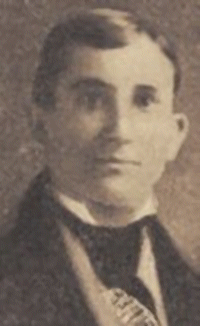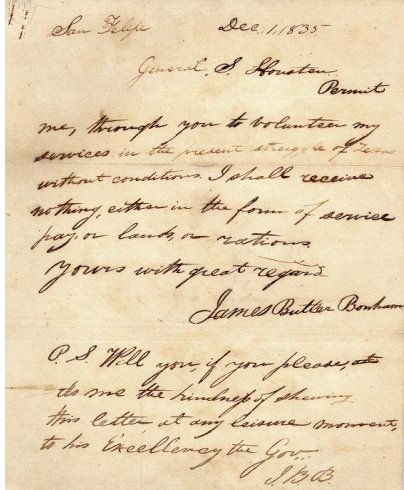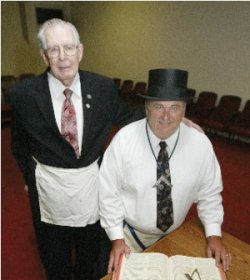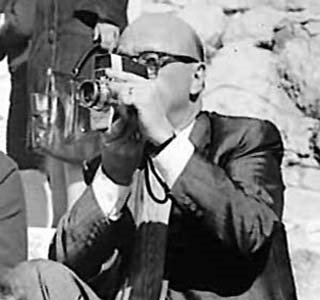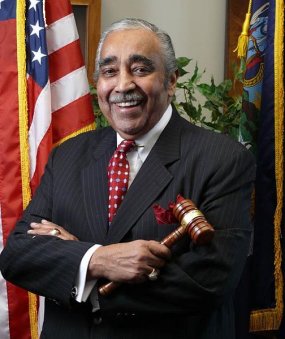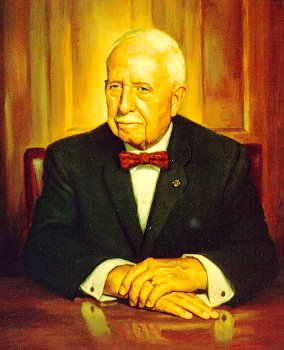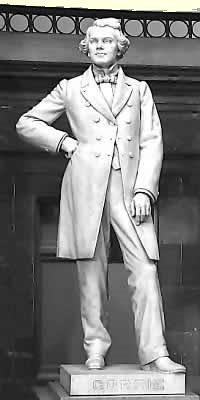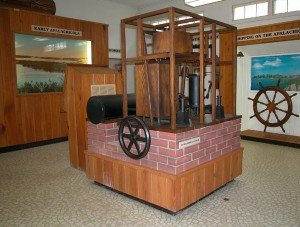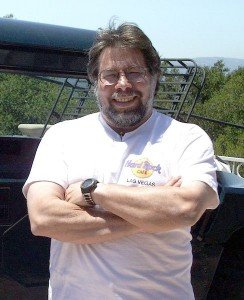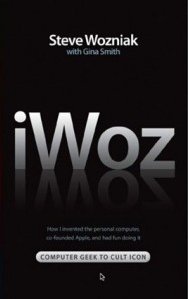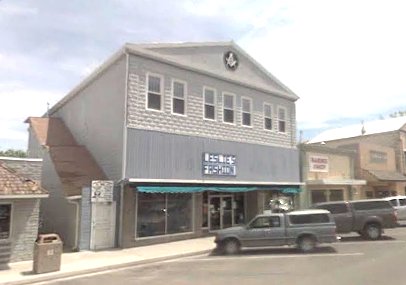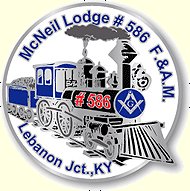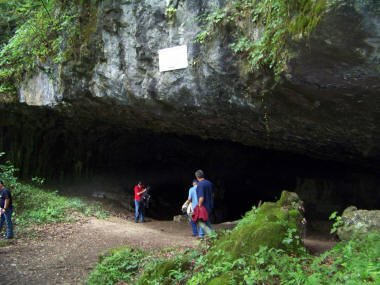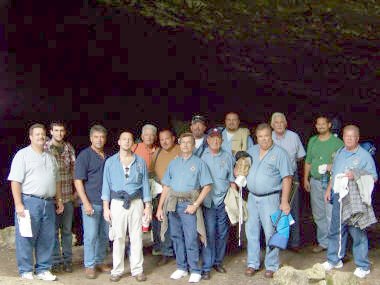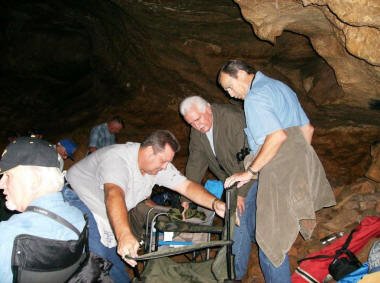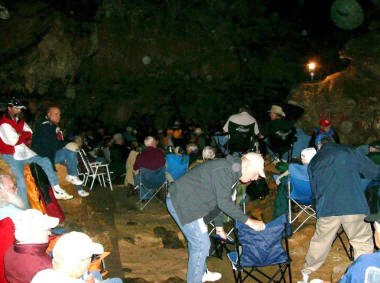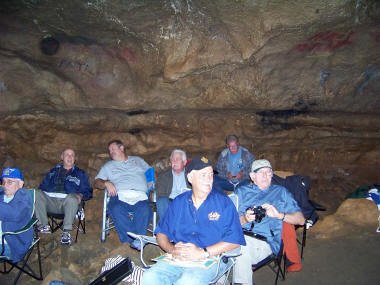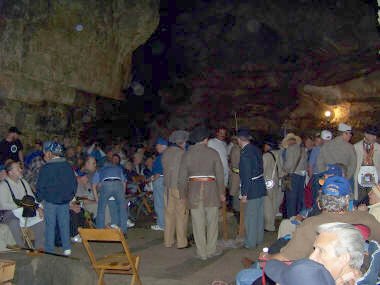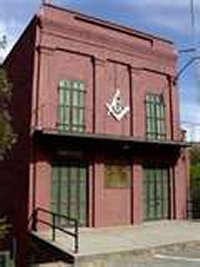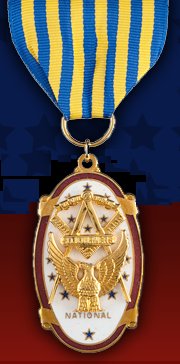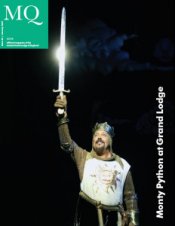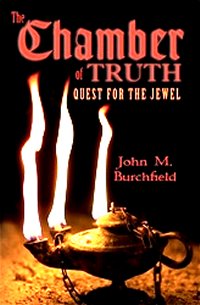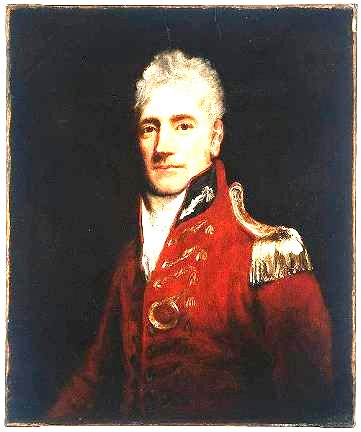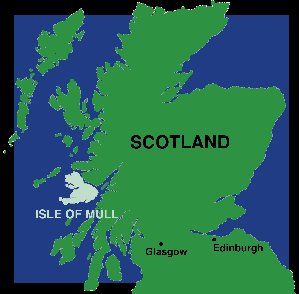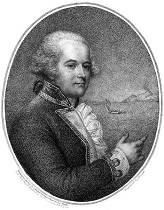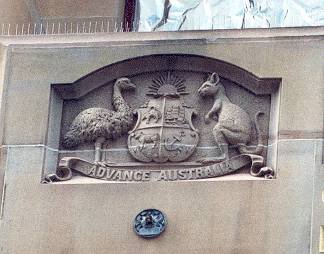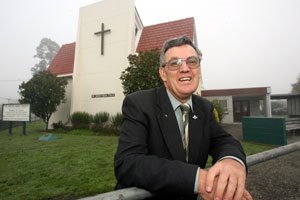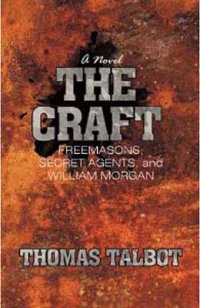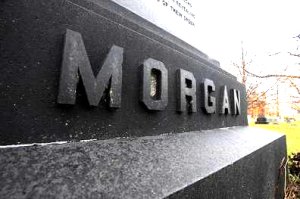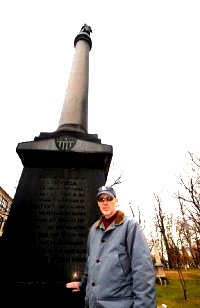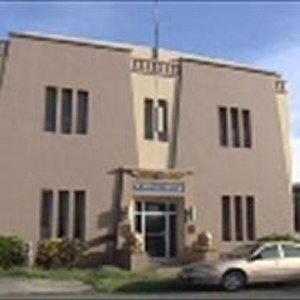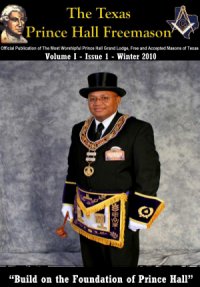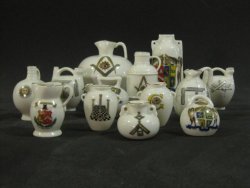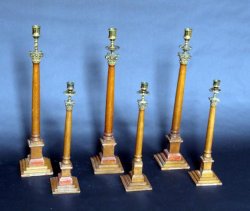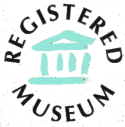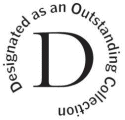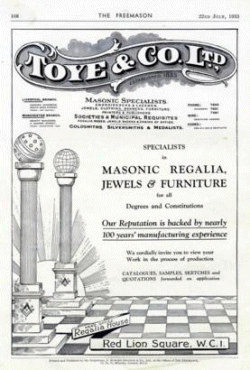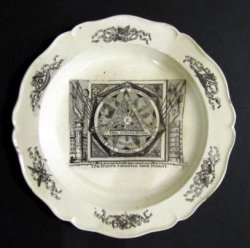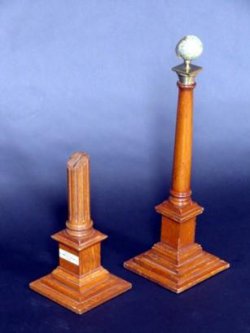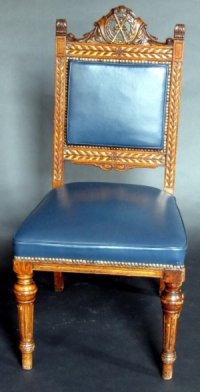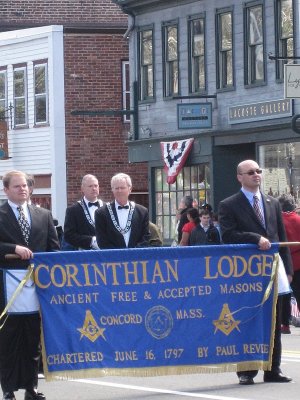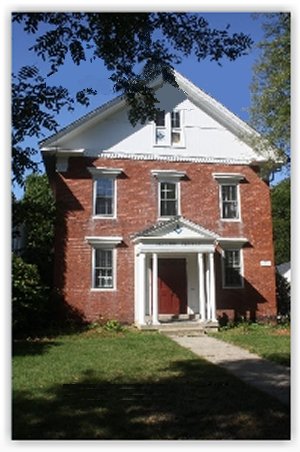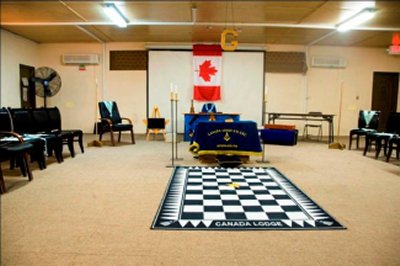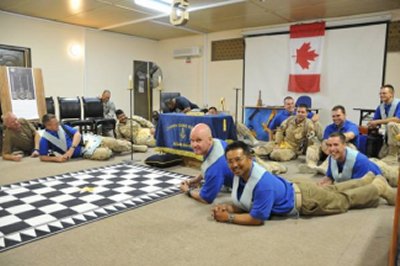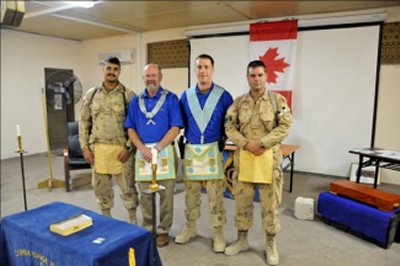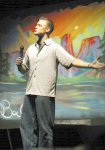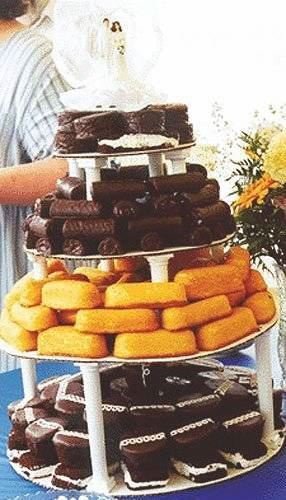
|
December 2010

Ashley Lodge, #681 A.F.& A.M.
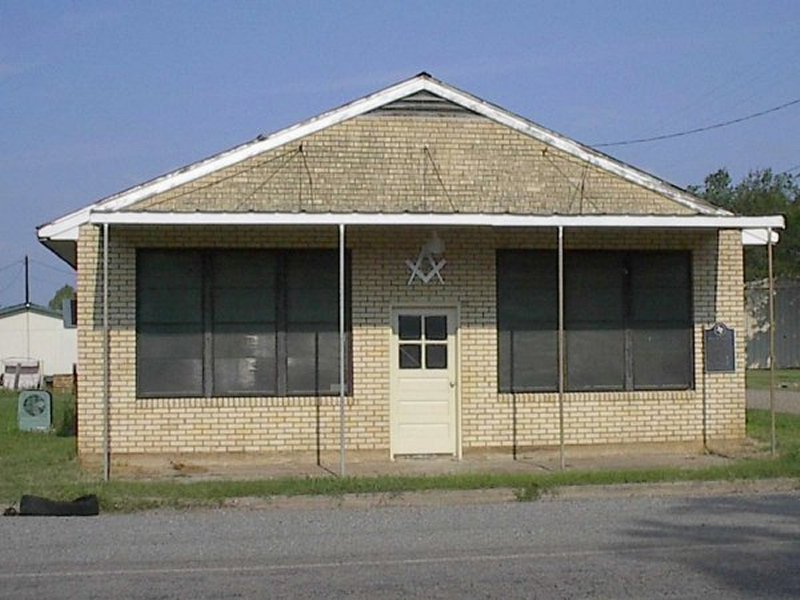 Ashley Lodge, #681 A.F.& A.M. |
|
Page III |
By
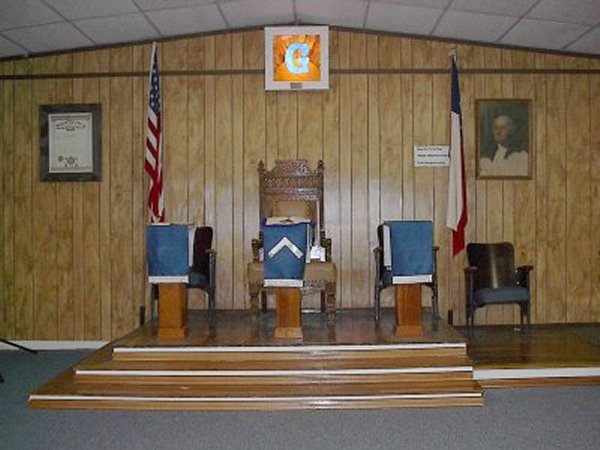
Most of the records of Ashley Lodge, prior to October 1952, were lost in the fire that destroyed the building in the early 1950s. The historical information contained here was compiled from records of communications with the Grand Lodge of Texas and interviews of members conducted by Brother A. M. Savage and his wife, Adna L. Savage. Much of the information about the early years of the Lodge, biographical information of its members, how it was founded and named or its roles and activities in the community have been lost with the records in the fire.
Ashley Lodge was chartered by the Grand Lodge of Texas on December 12, 1889 in Bailey, Texas and began meeting on January 4, 1890. Brother Joseph Myers, District Deputy Grand Master of Masonic District 54, constituted the Lodge in accordance with constitutional requirements. Brother A. J. Smith, Marshall, proclaimed the officers of Ashley Lodge, No. 681, duly and constitutionally installed in conformity to the rites of Freemasonry. The Stated Meeting time was set for the Saturday on, or before the full moon of each month at 7pm. In 1934, the Stated meeting night was changed from Saturday to the Monday on, or before a full moon. The Stated meeting night was again moved, in 1939, to the first Monday of each month, where it currently remains. The original Masonic Hall was on the upper floor of a small two story building jointly built and owned by Ashley Lodge and the Corinth Baptist Church of Bailey, on land deeded to them by John L. Atkins. Records indicate the Lodge's cost for the building totaled $570, which would lead us to conclude the entire building cost shared by Ashely Lodge and the Baptist Church would have been $1,140. The two continued to meet in this building until 1912, when Ashley Lodge purchased a building downtown. Meetings were held in the upstairs portion of the downtown building and the downstairs portion was rented to merchants. Over the years, tennants of the downstairs included a drugstore, grocery, meat market and car agency. When the building burned, the Lodge continued to meet at Grove Hill Lodge in Leonard. Plans were immediately made to rebuild and Lodge members cleaned brick from the building for sale to a private builder in Houston. Proceeds from the sale of brick and the insurance settlement allowed Ashley Lodge to rebuild without entering into debt. Permission was obtained from the Grand Lodge of Texas to build a one-story building, one of only two others allowed at the time. A building committee of Rodney Tefteller, John P. Hale and Tom McDonald was given authority to purchase materials and begin construction of the building, which began on July 1 1952. The building was dedicated on November 12, 1952 and Ashley Lodge continues to meet in the same building, with updates over the years which include new furniture, airconditioning, heaters, carpet, a safe and updated kitchen appliances. Ashley Lodge celebrated its Centennial Anniversary on July 28, 1990. The celebration was crowned with the dedication of a Texas Historical Commission historical marker, by then Grand Master A. D. Hannah.
The Officers of Ashley Lodge for the Charter year were: J. K. Taylor; Worshipful Master, A. J. Ray; Senior Warden and J. M. Jones; Junior Warden. Thirteen Lodge members joined to loan Ashley Lodge the $570 necessary for the Lodge's portion of the building cost: Samuel Anderson, W. T. Bell, J. W. Brown, J. M. Jones, J. W. Garrison, A. Gover, D. G. Sudderth, S. G. Leslie, E. Pevahouse, F. K. Taylor, John Wofford, W. L. Owens and A. J. Ray. Ashley Lodge was 110 members strong in the late 1800s, with the membership roll increasing to 240 in the early 1900s. Ashley Lodge currently has 42 members, three of which are 50 year members: J. W. Davis Jr., Tom McDonald and Grady Giddeons. Four members, past and present, have served as District Deputy Grand Master of Masonic District 3: W. R. McMurry, Frank Robinson in 1986, J. R. Stephens in 2000 and Bill Rosenbaum in 2002. Ashley Lodge has awarded four Golden Trowels to past and present members: J. H. Stephens, Jewel Mims, J. R. Stephens and Bill Rosenbaum. One member, Rodney Tefteller, received a Lifetime Certificate and three members, Frank Robinson, J. R. Stephens and Clinton Webb have received "A" Certificates. Two members, Frank Robinson and J. R. Stephens served as District Instructor for Masonic District 3, a duty which J. R. Stephens continues to hold. |
|
Page IV | |||
|
James Butler Bonham By Corky
James Butler Bonham was born on February 20, 1807 near Red Bank (now Saluda), South Carolina. He was the son of James and Sophia Smith Bonham. She was his father's second wife. James Bonham had moved to South Carolina from Maryland shortly after the American Revolution. William B. Travis, who destined to be the commander of the Alamo, was the second cousin to James Bonham. Their families attended the same church in South Carolina. James Bonham was also a first cousin once removed to Andrew Pickens Butler who was a United States Senator and one of the authors of the Kansas-Nebraska Act. His younger brother, Milledge Luke Bonham, was a brigadier general in the Confederate States Army in the American Civil War, and served as Governor of South Carolina from 1862 to 1864. Bonham entered South Carolina College in 1824. In 1827, his senior year, he led a student protest over harsh attendance regulations and the poor food served at the college boardinghouse. He along with the entire senior class was expelled, Bonham then took up the study of law and began practicing law in Pendleton, South Carolina. In 1830, while practicing law in Pendleton, Bonham but was found in contempt of court. He had beat another attorney with his cane after he had insulted one of Bonham's clients. When ordered to apologize by the sitting judge, he refused and threatened to tweak the judge's nose. Bonham was sentenced to ninety days for contempt of court. During the Nullification Crisis (a sectional crisis during the presidency of Andrew Jackson created by South Carolina's 1832.) in 1832 Bonham served as an aide to Governor James Hamilton Jr. He brandished a sword and pistol, condemning Andrew Jackson and the Washington politicians. His outspoken position brought him the rank of lieutenant colonel. At the same time he served as captain of a Charleston artillery company. In October of 1834, Bonham moved to Montgomery, Alabama, where relatives lived. The following year, on October 17, 1835, Bonham led a rally of support for the Texan cause at the Shakespeare Theater in Mobile. Three days later he was elected by citizens of Mobile to carry their resolutions of support to Sam Houston. Two weeks later he was organizing a volunteer company, the Mobile Grays, for service in Texas. The company reached San Felipe, Texas in November 1835.
Bonham and Houston quickly developed a mutual admiration. After being in Texas for only one month Bonham recommended to Houston that William S. Blount of North Carolina be granted a commission as a captain in the Texas cavalry. On January 11, 1836, Houston recommended to James W. Robinson that James Bonham be promoted to the rank of major. It is believed that Bonham traveled to San Antonio de Béxar and the Alamo with James Bowie and arrived on January 19, 1836. On January 26 he was appointed as a member of the committee of seven to draft a preamble and resolutions on behalf of the garrison in support of Governor Henry Smith. However, on February 1 he was an unsuccessful candidate in the election of delegates to represent the Bexar garrison at the Texas constitutional convention. On or about February 16, 1836, Bonham was sent by Travis to try to obtain aid from the garrison at Bexar. He visited Goliad, and spoke to Commander James Fannin, but they were unable to provide assistance. (it is possible that the two may have met previously in Charleston in 1832 during the Nullification crisis). Fannin recommends JBB to Governor Smith, and later the same day Bonham visits Smith. Bonham returned through the Mexican lines to the Alamo on March 3. He was carrying a letter from Robert M. Williamson, who is better known as Three Legged Willie, that assured Travis help was on its way and urging him to hold out. Bonham died in the battle of the Alamo on March 6, 1836. James Bonham is believed to have died manning one of the cannons in the interior of the Alamo chapel.
Bonham is well remembered in Texas. His Legacy includes the town of Bonham, Texas, is named for him. Ironically, Bonham is the county seat of Fannin County, named for the commander who Bonham tried to enjoin for assistance at the Alamo. "Flat Grove," Bonham's home in Saluda, is the only known birthplace of an Alamo defender still in existence. It is maintained as a museum. In World War II the United States liberty ship SS James B. Bonham was named in his honor. Many Texas schools are named after James Bonham, for example, in the cities of Abilene, El Paso, Houston, McAllen, Midland, San Angelo, San Antonio, and Temple.
Compiled from Wikipedia, Texas State Library and Archives Commission and Handbook of Texas On-Line, by John "Corky" Daut, P.M. Waller Masonic Lodge #808,
|
|
Page V | |
|
The Small Town Texas Mason E-Magazine has an excellent article going out in the November 2010 edition. The publication comes from the heart of a brother who publishes it to “enlighten, educate, and entertain Masons and non Masons alike.” Like so much of Masonic publishing it is a free press to circulate Masonic thought and interest.
In the November issue, the publisher Corky Daunt asks the question:
Is Freemasonry’s reputation was being harmed by to many news stories in newspapers and being repeated on the internet about Freemason bringing Civil Lawsuits against Grand Lodges for Masonic reasons.
You can read the original here.
He reserves his conclusions and posts instead three responses sent in by readers on the subject, two from North America (one from our very own Fred Milliken) and one from Australia. The relevancy of the question is an important one and something this site has been charged with repeatedly as reporting (or editorializing) on the bad in the news.
At the end of his piece, Corky asks “Do you think bad publicity is harming Freemasonry’s image?”
To be honest, I would have to answer and say that it is. But, with the caveat that the press and editorializing is only so bad as the reality of the events taking place themselves. Because there is no system to mitigate these events that lead to the bad press they are left to spiral out of control in an increasingly close world.
In other words, there is no system to police the system itself, so a free press (as with Democracy) needs to exist so as to ensure that the system adheres to its own principles.
The question then becomes is the system of Freemasonry of such importance that it needs such a medium to keep watch of its practice, or is it merely a membership organization like an athletic club like the YMCA or a big box shopping warehouse like Costco or Sam’s Club, where the membership value we get comes in the commodities we take away from it.
Ask yourself this: Is Freemasonry really a practice of some moral philosophy? And if so, how do we (the members) practice it? Or, is it just a membership club that we go to for some monthly dinner socializing and entertainment in the form of democratic practice in voting on paying for the phone bill.
Personally, I like to think that its a Moral Philosophy that needs to be kept on its toes so as not to fall into the morass of base society, that it has an elevated sense of upright moral rectitude (that’s what we were told right?). Why else would we be members?
So to answer Corky’s question, Yes, I think the bad publicity hurts us as a fraternity overall. But, I think what hurts us even more are the activities being reported upon which chip away at the larger structure of the craft. We need to know what goes on in our own house, our Masonic house, so as to be vigilant against it and the only way to do that is to know what is going on – good, bad, or indifferent.
Otherwise, we can keep our heads buried int he sand while lodges are left to falter, members expelled for bucking the system, or indiscretions allowed to continue in fear of reprisals – all of which seem very un-Masonic in my handbook. But, if those are acceptable in the great moral society, then we can each just look for the next discount coupon for a reduced cost dinner at the next lodge meeting and not give a thought to our role in supporting a greater moral philosophy.
What do you think? Is the bad press hurting Masonry?
| |
|
Page VI | ||

The records of the Grand Lodge of England show that in 1768, Lodge Amity No. 407 was meeting in Canton; however, it had ceased working by the end of the century. Two lodges were established in Hong Kong soon after the British acquired the Territory. The older one, Royal Sussex Lodge No. 501 EC (named after the Duke of Sussex, who was then the Grand Master of the English Freemasons) was warranted on 18 September 1844. It later moved to Guangzhou, then on to Shanghai and only returned to Hong Kong in 1952. The second lodge, Zetland Lodge No. 526 EC was warranted on 21 March 1846. It was named after the Marquis of Zetland, the next Grand Master. Zetland Lodge claims seniority over Royal Sussex Lodge as it has remained in Hong Kong since its formation. Other Lodges were established over the following years. In 1853 Zetland Lodge built a hall for its meetings on the upper part of Zetland Street where New World Tower now stands. This was the first Zetland Hall and in time it became the meeting place of all the Hong Kong lodges. In China, lodges were formed in Shanghai, then in Ningbo and Tianjin. Lodges were formed eventually in most of the ports of China that were open to foreigners, and in the inland cities of Nanjing, Beijing, Harbin and Chengdu. These operated under charters granted by the supreme Masonic authorities in many countries, with those with most lodges being from England, Scotland, Massachusetts and later, the Philippines. Because of restrictions imposed by the Imperial Government, it was almost impossible for a Chinese to become a freemason during the Qing Dynasty, although in 1873 the leader of a Chinese educational mission in Massachusetts did so. The first known Chinese to become a mason in China was Bro. Shan Hing Yung, a lieutenant in the Imperial Navy, who was initiated into Lodge Star of Southern China No. 2013 EC in Guangzhou in 1889. Early Chinese freemasons in Hong Kong included Sir Kai Ho Kai and the Honourable Wei Yuk. By the beginning of the Sino-Japanese War, many lodges in China had a majority of Chinese members, especially those meeting under the Grand Lodge of the Philippines. During the war, the Japanese persecuted Freemasons in the occupied areas of China. Lodges however continued to meet. Several of the Hong Kong lodges met informally and under very dangerous conditions in the internment camps and Perseverance Lodge No. 1165 EC, meeting in Stanley prison, even kept a minute book. With the end of the war, the lodges in China and Hong Kong revived, although some Lodges moved from the provinces into Shanghai, Tianjin and Hong Kong. Enthusiasm was so great that the six Philippine lodges meeting in China, which had an almost entirely Chinese membership, formed the Grand Lodge of China in 1949. With the establishment of the People's Republic of China, all the lodges continued to meet, but those that met in the American Masonic Temple in Shanghai - including the Grand Lodge of China - closed down in 1952. The English District Grand Master of Northern China offered to close if the Central Peoples' Government requested it, affirming that regular Freemasons always give obedience to the lawful government of whichever country they are in. No request was made and the British lodges meeting in the Masonic Hall in Beijing Road West in Shanghai continued to meet without difficulty. Cosmopolitan Lodge No. 428 SC met there until 1962, when it transferred to Hong Kong. This was because its largely foreign membership had by then left China and not because of any conflict with the authorities. The British Masonic Hall then became the Shanghai headquarters of the Five Chinese Medical Associations. Zetland Hall on Zetland Street in Hong Kong Island had been damaged by Allied bombing at the end of the war and the present Zetland Hall at No. 1 Kennedy Road, was constructed in 1950. This enabled lodges from Xiamen, Fuzhou, Guangzhou, Shantou and Shanghai to be revived, and also permitted expansion of the Craft to take place. There are now twenty-seven lodges, with over 1,500 members, meeting
at Zetland Hall, together with a considerable number of higher Masonic
orders. All lodges and orders still meet under the three Grand Lodges
of the British Isles, but enjoy considerable local independence. | ||
|
By JILL MOON
Masons of Illinois 341 petitioned and received their charter Oct. 3, 1860.
"It originally started with a few guys by the name of Beirne who met in a barn in Beirneville, which probably was not a proper town," Full Moon Lodge No. 341 member Mike Hillman of Dow said.
The group christened their gatherings Full Moon Lodge.
Hillman recounted that the men moved to a permanent place March 5, 1862, in Grafton. It moved to its current location and original building in 1869.
"We've had our meetings and activities there ever since," Hillman said.
Full Moon Lodge sits out of the flood plain and had water only in the basement during the Great Flood of 1993, Full Moon Lodge No. 341 member Ed Amburg said. Amburg, a lifelong Grafton resident, has been a member for more than 50 years.
Full Moon Lodge members had a rededication ceremony Aug. 14 from the state Grand Lodge at Grafton Elementary School. Approximately 200 people attended the rededication and could not fit into the Full Moon Lodge, which is upstairs in the building. The organization rents out the downstairs.
Hillman joined the lodge with friends in 2001. It currently has 78 members who meet at 7 p.m. on the third Thursday of each month. The Full Moon Lodge No. 341 membership maintained the building throughout the years, including updating its plumbing.
Masonic organizations are a freemasonry fraternal order that arose from obscure origins in the late 16th to early 17th century. Freemasonry now exists in various forms all over the world, with a membership estimated at around 6 million, including approximately 150,000 in Scotland and Ireland, more than 250,000 under the jurisdiction of the United Grand Lodge of England and a little less than 2 million in the United States.
"It's an organization of men, and they come together with the common belief in God or a superior being," Hillman said. "We come together monthly and contribute to different charities."
The fraternity is organized administratively into independent Grand Lodges or sometimes Orients, each of which governs its own jurisdiction, which consists of subordinate, or constituent, lodges.
In the last year, the Full Moon Lodge donated $250 to a local food pantry, Hillman said. Full Moon Cares is a program that donates $200 gift certificates to the Grafton and Dow grade schools.
"We provide the principal of each grade school with the gift certificate, and if a teacher identifies a child in need, the teacher takes that money and gets what the child needs," Hillman said. "We do it without creating any kind of stigma on the child."
Full Moon Lodge No. 341 also donates to the state Grand Lodge.
| ||
|
Page VII | ||||
By The Masonic Traveler
We are constantly reminded of the super stars of Famous Freemasons which include George Washington, Ben Franklin, Mark Twain, John Wayne, and Buzz Aldrin just to name a few. But, Freemasonry stretches much deeper into the soil of Americana and besides the heavy-weights there are many less well known brothers; the un-sung Famous or infamous members of the Ancient and Honorable Fraternity.
Before we meet these distant Masonic relatives, we need to remind ourselves that it was not their gentle association with the fraternity that predicated their particular place in history. No, rather that is the product of their serendipity, morals and ethics, their natural skills and talent, their inspirational calling, and personal character. The man makes the history, not his affiliations. What ever their place in history, their presence still represents an aspect of our many fraternal facets – for better or for worse.
Witness to history Abraham Zapruder
At the age of 15 Zapruder's Russian-Jewish family immigrated to the US leaving a 1920?s Civil War torn Russia. Having only four years of formal education, Zapruder settled in Brooklyn, New York, where he studied English and worked as a pattern maker. He later moved to Dallas in 1941 eventually founding a clothing manufacturing company, whose offices were directly across the street from the Texas Book Depository.
Saying of the event he bore witness to in a WFAA Dallas/Fort Worth television interview in 1963:
I got out in, uh, about a half-hour earlier to get a good spot to shoot some pictures. And I found a spot, one of these concrete blocks they have down near that park, near the underpass. And I got on top there, there was another girl from my office, she was right behind me. And as I was shooting, as the President was coming down from Houston Street making his turn, it was about a half-way down there, I heard a shot, and he slumped to the side, like this. Then I heard another shot or two, I couldn't say it was one or two, and I saw his head practically open up [places fingers of right hand to right side of head in a narrow cone, over his right ear], all blood and everything, and I kept on shooting. That's about all, I'm just sick, I can't…
Zapruder passed in 1970 in Dallas.
Congressmen Charles Rangel
Born and raised in Harlem, he entered the service of the Army where he led a group of soldiers out of a deadly Chinese Army encirclement during the Battle of Kunu-ri in 1950. Following the war, he graduated from New York University in 1957 and St. John's University School of Law in 1960, working as a private lawyer, Assistant U.S. Attorney, and legal counsel during the early-mid 1960s. He later served two terms in the New York State Assembly from 1967 to 1970, and then was elected to the House of Representatives.
In recent years Rangel was faced with a series of allegations of ethics violations which culminated in July, 2010, where Rangel was charged with 13 counts of violating House rules and federal laws, to which he will face a formal trial in the House to determine his fate.
Congressman Charles Rangel is a member of Joppa Lodge No. 55, in New York
Entrepreneur James Cash Penney a.k.a- J.C. Penney
With the onset of the Great Depression, Penney was beset by financial ruin but met store expenses by borrowing against his life-insurance policies. He recovered from the financial setbacks but at the expense of his health, to give generously to a number of charities, eventually founding the James C. Penny foundation in 1954, later to be merged into the Oakland, California based Common Counsel Foundation, which partners with families and individual donors to expand philanthropic resources for progressive social movements.
Penney received his degrees in Wasatch Lodge No. 1, Salt Lake City, Utah, April 28, May 19, and June 2, 1911. Buried at Woodlawn Cemetery in the Bronx, New York Penney passed February 12, 1971.
Inventor John Gorrie
Born October 3, 1803 on the isle of Nevis in the Caribbean Sea, John Gorrie grew up in South Carolina, moving to the port city of Apalachicola in Florida in 1833. Being very active in his community, he was resident physician at two hospitals, and at various times a council member, Postmaster, President of the Pensacola's Apalachicola Branch Bank, founding vestrymen of Trinity Episcopal Church, and served on the founding committee of the Masonic Lodge in 1835, where he was appointed secretary pro-tem on December 28, 1835, later serving as treasurer.
Of his invention, following a Malaria epidemic in 1841, Gorrie resigned from all his civic responsibilities, lowered his patient load, and dedicated his time to the illness. Malaria, it was speculated, was from the rapid decomposition of vegetation and the hot humid air which created a poisonous gas. Gorrie, in addressing these issues, surmised that by filling in the low lying areas and draining swamps would be a way to combat the problem. His second prong to the cure was to develop a means to control his patient's body temperature and the humidity in their rooms by the introduction of hanging ice above the sick beds.
|
|
Page VIII | |||
Continued From Page VII
Despite the significance of his development Gorrie never made a penny from his invention. Instead he and his invention were denounced by Northern Newspapers and he was ridiculed his efforts. This was followed by a strong lobby against him by northern ice suppliers, who monopolized the ice market and feared lost profits. Gorrie fell into financial ruin when he was sued for unpaid debts and the unexpected passing of his only investor having never provided the funds to commercialize the invention.
Falling into a nervous breakdown, Gorrie passed at the age of 54 on June 16, 1855. Modern air conditioning is still based largely on the principals discovered by Gorrie today, and was not re-discovered until 1902 by Willis Haviland Carrier.
Programmer Steve Wozniak
On the heels of selling off his and Steve Jobs possessions, the two collaborated to raise $1,300 to assemble the prototypes of what would become the Apple computer.
Formed in 1976, Apple computer went public in 1980 and made both Jobs and Wozniak multimillionaires. After 12 year of founding his electronic empire and full-time employment with Apple, he ended his career on February 6, 1987 though he still receives a paycheck, and is a shareholder to the company.
Wozniak has since gone on to write his autobiography iWoz, and found several companies in and around electronics and technology.
From his book iWoz: Computer Geek to Cult Icon: How I Invented the Personal Computer, Co-Founded Apple, and Had Fun Doing It, Wozniak says about his experience with the Fraternity:
Wozniak was initiated, passed, and raised in Charity Lodge No. 362, Campbell, CA, in 1980.
| |||
|
Page IX | ||||||||||||
“Here's a site you might find interesting, it's one of the latest Lodge sites that I've created and maintain. McNeil Lodge #586 F&AM in Lebanon Junction, KY, which is just south of Louisville. They're a wonderful Lodge and very active. Thought you might like to look at a recent adventure they were witness to, an EA Degree in Tennessee conferred by Canadian Brethren, and then the next day, a MM Cave Degree, conferred by another Tennessee Lodge (not the host Lodge) who wore Civil War regalia (Confederate of course).”
I did read it and here is part of it.
On August 20 and 21, 2010, thirteen Brothers from McNeil Lodge #586 and one Brother from Bullitt Lodge #155 F&AM of Shepherdsville, Kentucky traveled to Kingston, Tennessee for the trip of a lifetime. On Friday night, August 20, 2010, some of our Brothers from the North, Palmer Lodge #372 AF&AM from Ontario, Canada, conferred the Entered Apprentice Degree at Union Lodge #38 F&AM, who was our host lodge for both the EA Degree held on Friday night, and the MM Degree held on Saturday. Hiram Lodge #7 F&AM performed the Master Mason "Civil War" Degree in Eblen's Cave, Kingston, Tennessee on Saturday, August 21, 2010. These Brothers were dressed in full civil war regalia. It was a wonderful weekend for Brethren to dwell together in unity, and we look forward to making trips like this again in the future!
| ||||||||||||
|
Page X | |
By Dwight Seals
The National Sojourners is an organization of Master Masons who are veterans of the American Armed Forces who have served as non-commissioned officers, chief warrant officers or commissioned officers. There are local Chapters in nearly every state in the union. I did a DUK on them once before so I won't elaborate on them more right now other than the below. From my latest issue (September-October 2010) of The Sojourrner magazine comes this.
Did U Know?
The ceremony requires a minimum of six Sojourner members and a modest number of easily available props. It includes a patriotic presentation, Masonic explanation of the Forget-Me-Not pin, folding of a casket flag and individual recognition of all veterans including active status personel. All veterans are invited to meet on the level where the ceremonial Master asks them to give their names and branch of service. They will then be presented, as apporpiate, a flag pin (with Masonic emblem stamped on the rear) for non-Masons or a Forget-Me-Not pin for Masons. These pins are available from the National Sojourners Headquarters for a nominal fee.
If you are interesed in this, want more info on Chapters in your area or are intersted in joining this great Masonic organization you can visit their website, which is located at: http://www.nationalsojourners.org/
| |
|
Page XI | |
|
From The Rural Lodge Newsletter
Freemason Writes Fiction Based on Secret Fraternity
Asheville NC (Vocus)
In his new book, The Chamber of Truth: Quest for the Jewel, he has chosen to transform these remarkable experiences into a riveting tale full of danger and intrigue. The novel, inspired by Freemasonry, centers on a brotherhood of men faced with temptation, all the while striving to remain true to their principles. In The Chamber of Truth the main character struggles to uncover the truth about his ancestry as he is confronted on all sides by conspiracies, deception, and betrayal.
Burchfield masterfully constructs a world steeped in ancient religion, the society of Freemasons, and the inner workings of the city of Jerusalem. Spoken through the voice of a member of the society, The Chamber of Truth offers an unprecedented glimpse of the true power of the principles and belief system of the Freemasons.
About the Author
John M Burchfield is a Freemason and member of the Grand Lodge of Ancient, Free, and Accepted Masons of North Carolina.
He resides in Asheville NC with his wife, Debby, and recently retired from a thirty-year career in law enforcement. He now spends a good portion of his time writing and running the mountainous trails in the western region of his beloved state. He's completed over twenty marathons including Boston. He hopes to continue to write and run as long as his mind, body, and the good Lord allow it.
| |
|
If there was just one phrase I wish every Freemason the world over would eliminate from their vocabulary, it would be "We have no secrets." Somebody just said it again in Nevada earlier this month.
Please. Stop. Saying. It.
Yes, Freemasons do have secrets. Not everyone is entitled to them. They are symbols of our honor as gentlemen. And no, we can't tell you.
Is that so damned hard to say?
| |
|
From The West Virginia Masonic Website, "Masonic Crusade”, comes this breaking news that will disperse heartburn if not fear across Mainstream Freemasonry
The Judge has apparently ruled in a pre-trial hearing the following:
As the Beehive has pointed out previously, Grand Lodges that have incorporated (and most if not all have), now are no longer purely private organizations but they have entered the civil world and are now subject to civil authority and to the rules of incorporation of their state. They no longer can violate the Civil Rights of their members. They can no longer get away with injustice with impunity. Civil courts will rule upon their practices because they have removed themselves from the exclusive private world into the public sphere. This they did of their own free will and accord and now it is time to pay the piper.
This could have far reaching effects for the high profile cases of Derek Gordon in Arkansas and Mike McCabe in New Jersey and many other Freemasons across the nation who have been treated unjustly by their Grand Lodges.
|
|
Page XII | |
|
A hardworking Brooklyn mother was hacked to death early this morning allegedly by her sword-wielding, bit-actor son during a bizarre religious meltdown in which he screamed Bible passages and made obscure references to Freemasonry, police and witnesses said.
Greg Clare, who lives downstairs from victim Yannick Brea, 55, shared with her son Michael Brea, a 31-year-old actor and low-level Freemason who had roles in "Ugly Betty" and the movie "Step Up 3D," said he first heard screams about 1 a.m.
"He kept chanting: 'Repent! Repent! Repent!'" Clare said, referring to Brea. "He kept asking her if she believed in Jesus Christ, if she believed in God. She was yelling 'Help me! Help me!'"
Another neighbor said Brea kept calling for the "architect of the universe," a term used by Freemasons to refer to a supreme being. And a police source said the murder weapon was a three-foot ceremonial Masonic sword.
A police official said 911 calls started coming in about 1:12 a.m. reporting a domestic argument in the second floor apartment on Park Place. Cops arrive minutes later and could hear Brea chanting Biblical terms behind the locked door but heard no indication of a fight.
Then a neighbor told them he could see blood on the windowsill from his own apartment so cops followed him, confirmed the blood, and then kicked in the front door.
Once inside they saw Brea brandishing the large sword, and called Emergency Services Unit for backup, which is standard practice according to Police Commissioner Ray Kelly.
| |
|
Dear Bro Dan,
You make a couple of other important points that I should deal with.
Secondly, allowing voluntary attendance at MAPs might work for some, but I strongly disagree that attendance by a brother at an educational session put on for his benefit, and the benefit of other new members, can be said to be “demeaning”. It is no doubt true that many younger men now joining the Craft are much better informed (by Internet search tools for one thing!) than older brethren were when they joined (me included!) But it is not condescending to provide education in my view – it is respecting the man’s need to understand what we are trying to teach by way of allegory and symbols – a teaching method, I should immediately say, which is very different from the norms found in modern society.
I am disappointed that you say that had you been aware of these educational requirements you would not have joined. These requirements were placed into the Constitution for the benefit of new masons like you – not to humiliate or degrade you, or delay your progress – but rather to give you the basic knowledge needed and the time to enjoy your Freemasonry before anything further was demanded of you.
You refer to a time over 30 years ago when the numbers of our members was much greater than it is today. This is true – but the educational elements and time requirements you complain of were not the cause for this decline. I think the reason many masons just dropped away is that they did not understand what we are about – and no one taught them either! In the past I suspect many were just expected to learn about Freemasonry “by osmosis”. Today, however, I do not see that any man would join any organization without expecting - at the very least - the sort of “orientation” program that the MAPs provide. Nor do I think that any man today would expect to be immediately thrust into the thick of things without time to find his way around, and settle into an organization.
Freemasonry is a progressive science – education and training are as important to a mason’s ongoing interest and satisfaction (and, I might add - ability to perform) as they are in any other role in society. I hope, my brother, you and I have many opportunities to discuss this, and many other questions, in the South over the many years to come in your Masonic career.
|
|
Page XIII | |||||
|
An inscription on his tomb in Scotland describes him as "The Father of Australia"
.
Early life and career
On 23 October 1776, under the Captain Murdock MacLaine, the 84th
Regiment was in the Battle of the Newcastle Jane. This battle was the
first in which a merchant British vessel defeated an American Privateer
vessel. The 84th Regiment was on the transport ship Newcastle Jane off
the coast of Cape Race, Newfoundland. On board the ship was 20,000
pounds sterling and 3,000 sets of uniforms, much of which was for the
84th Regiment. On 23 October at 4:00am American privateer came
within 30 yards of the Newcastle Jane. The American had ten carriage
guns and twelve swivel guns and the Jane had only 6 three-pound carriage
guns and a few swivels. The ships opened fire on each other. After
a 24-hour standoff, the 84th Regiment had outmaneuvered the Americans,
leaving them with many wounded and a damaged vessel. By the
time the battle was over, the Newcastle Jane only had two rounds of
shot left.
One of the crew in the Battle of the Newcastle Jane was a young recruit
Lachlan Macquarie, who eventually became known as "the Father of
Australia." Macquarie began his military career in 1776 at the age of
fourteen when he sailed from Scotland to the New World. The attackers
were repulsed and, six months later, on 9 April 1777, he obtained an
ensigncy in the 84th Regiment.
He was initially stationed at Halifax NS, and was commissioned as an ensign five months after his arrival. In 1781, he was transferred to the 71st Regiment of Foot, and served with them in New York, Charleston, and Jamaica. In 1784 he returned to Scotland as a half-pay lieutenant. Subsequently, he saw service with the army in India and Egypt. He was promoted Captain in 1789, Major in 1801, and Lieutenant-Colonel commanding the 73rd Regiment of Foot, in 1805.
Macquarie became a Freemason in January 1793 at Bombay, India, in Lodge No. 1 (No. 139 on the register ofthe United Grand Lodge of England) while serving with the 84th Regiment of Foot, prior to coming to New South Wales. He later joined the Lodge of Social and Military Virtues No. 227, Irish Constitution.
After laying the foundation stone at St. Mary's Roman Catholic Church in Sydney, he said “You must know that although I have never laid a first stone of a Catholic church before, I am a very old Freemason and shall keep this trowel as long as I live.”
Governor of New South Wales
In November 1807, Macquarie's cousin Elizabeth Henrietta Campbell became his second wife. In April 1809
Macquarie was appointed Governor of New South Wales. In making this appointment,
the British government reversed its practice of appointing naval officers as
governor and chose an army commander in the hope that he could secure the cooperation
of the unruly NSW Corps. Macquarie was promoted to Colonel in 1810,
Brigadier in 1811 and major-General in 1813, while serving as governor.
The Macquaries departed from England in May 1809 reaching Sydney on 28 December
1809. He started as a governor on 1 January 1810.
Macquarie was ordered by the British government to arrest two of the leaders of the Rum Rebellion. However, by the time Macquarie arrived in Sydney in December 1809, both leaders had already sailed for England to defend themselves. Macquarie immediately set about cancelling the various initiatives taken by the rebel
government — for example, all "pardons, leases and land grants" made by the rebels were revoked.
Macquarie ruled the colony as an enlightened despot, breaking the power of the Army officers who had been the colony's de facto ruler since Bligh's overthrow. He was "the last British proconsul sent to run New South Wales as a military autocracy".In 1812, the first detailed inquiry into the convict system supported in general Macquarie's liberal policies.
On a visit of inspection to the settlement of Hobart Town in Van Diemen's Land (now Tasmania) in November 1811, Macquarie was appalled at the ramshackle arrangement of the town and ordered the government surveyor to survey a regular street layout. This survey determined the form of the current centre of the city of Hobart.
The end of the Napoleonic Wars in 1815 brought a renewed flood of both convicts and settlers to New South Wales, as the sea lanes became free and as the rate of unemployment and crime in Britain rose. Macquarie presided over a rapid increase in population and economic activity. By the time of his departure the white population had reached approximately 37,000. The colony began to have a life beyond its functions as a penal settlement, and an increasing proportion of the population earned their own living. All this, in Macquarie's eyes, made a new social policy necessary.
As reformer and explorer
Central to Macquarie's policy was his treatment of the convicts whose sentences had expired or who had been given conditional or absolute pardons. By 1810 these emancipists had outnumbered the free settlers, and Macquarie insisted that they be treated as social equals. He set the tone himself (some people hated it) by appointing emancipists to government positions.
He scandalised settler opinion by appointing an emancipist as a magistrate, and by inviting emancipists to tea at Government House. In exchange, Macquarie demanded that the ex-convicts live reformed (Christian) lives. He required that former convicts regularly attend church services, and in particular, strongly encouraged formal Christian (Anglican) marriages.
Macquarie was the greatest sponsor of exploration the colony had yet seen. In 1813 he sent expeditions across the Blue Mountains, where they found the great plains of the interior. There he ordered the establishment of Bathurst, Australia's first inland city. He appointed John Oxley as surveyor-general and sent him on expeditions up the coast of New South Wales and inland to find new rivers and new lands for settlement. Oxley discovered the rich Northern Rivers and New England regions of New South Wales, and in what is now Queensland he explored the present site of Brisbane.
Continued On Page XIII
|
|
Page XIV | ||
Continued From Page XIII
The elaborate stables which Macquarie commissioned for Government House are part of the modern structure housing the Sydney Conservatorium of Music. Both of these buildings were constructed by Macquarie in defiance of the British government's ban on expensive public building projects in the colony and reflect the tension between Macquarie's vision of Sydney as a Georgian city and the British government's view of the colony as a dumping ground for convicts to be financed as cheaply as possible.
The origin of the name "Australia" is closely associated with Macquarie. "Australia", as a name for the country which we now know by that name, was suggested by Matthew Flinders, but first used in an official despatch by Macquarie in 1817.
Macquarie's policies, especially his championing of the emancipists and the lavish expenditure of government money on public works, aroused opposition both in the colony and in London, where the government still saw New South Wales as fundamentally a penal colony. His statement, in a letter to the Colonial Secretary, that "free settlers in general... are by far the most discontented persons in the country" and that "emancipated convicts, or persons become free by servitude, made in many instances the best description of settlers", was much held against him.
Despite opposition from the British government, Macquarie encouraged the creation of the colony's first bank, the Bank of NSW, in 1817.
Return to Scotland, death, and legacy
Macquarie returned to Scotland, and died in London in 1824 while busy defending himself against Bigge's charges. But his reputation continued to grow after his death, especially among the emancipists and their descendants, who were the majority of the Australian population until the gold rushes. Today he is regarded by many as the real founder of Australia as a country, rather than as a prison camp.
The nationalist school of Australian historians have treated him as a proto-nationalist hero. His grave in Mull is maintained by the National Trust of Australia and is inscribed "The Father of Australia".
Macquarie formally adopted the name Australia for the continent, the name earlier proposed by the first circumnavigator of Australia, Matthew Flinders. As well as the many geographical features named after him in his lifetime, he is commemorated by Macquarie University in Sydney.
Macquarie was buried on the Isle of Mull in a remote mausoleum with his wife and son.
| ||
|
By Daniel Simmons Ritchie
John Cromarty and his wife Marilyn, of St David's Church, are handing in their library cards and are asking all their friends not to visit the lodge, which is housing the town's books while the $6 million events centre is built. In a letter to Carterton Mayor Gary McPhee, which was distributed at yesterday's Carterton council meeting, Mr Cromarty warns that any decision to enter the premises is "not wise". "Freemasonry, while it does good works in the community, is based upon the worship of pagan gods," Mr Cromarty wrote. "While it portrays a facade as being compatible to Christianity in its teaching, it has its foundation rooted in witchcraft and pre-Christian teachings and practice." Mr Cromarty suggested alternatives, such as an empty building on High St, Carterton, or the Wai Art Centre. The couple are leaving at the end of the year but have taken the decision to hand their library cards in now to make a stand. Called by the Times-Age, Mr Cromarty said he had "no comment" but objected to his letter being published, believing it to be private correspondence. Mr McPhee said the letter showed a few people in the community were "stuck in the wrong century". "We are now in the 21st century but clearly some people didn't move along with us," he said. Warwick Cashmore, a past master and a Freemason of the lodge, said he was saddened by Mr Cromarty's comments. "I'm extremely disappointed he's taken this attitude. "The basic tenants of freemasonry are brotherly love, relief, and truth." He said freemasons, like Christians, believed in a god and, perhaps most importantly, had shared connections to paganism. "He should examine his own religion and see there are some very big connections to paganism there.Christmas and Easter both derive from pagan rituals," Mr Cashmore said. He believed the comments to be further evidence there were grave misunderstandings about freemasonry in the community after a recent court case in Wellington debating whether the society is a charity or not.
Carterton's Masonic Lodge has 52 members. |
|
Page XV | ||
|
Author Thomas Talbot had long been intrigued by the memorial to William Morgan that stands in the southwest corner of historic Batavia Cemetery. Talbot has written "The Craft," a novel inspired by the Morgan disappearance.
Capt. William Morgan, who disappeared after an abduction in 1826, has long been a source of intrigue and historical fascination. In Batavia, a memorial to Morgan is prominent in the southwest corner of historic Batavia Cemetery on Harvester Avenue. The towering monument has long fascinated Thomas Talbot, too.
Talbot's curiosity about Morgan's story has led him to write "The Craft" (iUniverse, 2010). The novel is a fictional account of Morgan's story, who disappeared after he threatened to expose the secrets of the Freemason Society.
"The story of Morgan has always been of interest to me," Talbot said. "Not only did the events take place right here in Batavia, but his kidnapping and disappearance caused a national scandal."
"The Craft" tells a broad story that includes presidential agents, rogue British Masons, attempted murder and arson. It's a classic struggle of good against evil, Talbot said. Talbot's main purpose in writing "The Craft" was to tell a good story, but he made sure there were historical accuracies about everyday life included in the story. “I tried to include some of the biographical details about Morgan, both fact and legend, as part of the story," Talbot said. "I did not set out to write a story only about Morgan. He is a very important part of the story, but not the whole story."
"The Craft" is about 80 percent fiction and 20 percent fact, Talbot said. There are other historical characters
in the book, including President John Quincy Adams, Governor DeWitt Clinton and Andrew Jackson. The version
of what happened to Morgan in the book is what is best for the story, Talbot said. He decided to not
make any claim about what truly happened to Morgan or support any one theory.
"I wanted to give a new fictional account of what happened to Morgan in order to make it part of the overall
story," Talbot said. "I did not set out to write a history of Morgan and the events surrounding his disappearance."
More on Morgan
Real-life mystery
When the business was destroyed by a fire, Morgan moved to Rochester before settling in Batavia. He was known by a local bartender to be a heavy drinker and gambler. Morgan described himself as a Captain from the War of 1812, but there was no record of that. He wanted to join the Freemasons in Batavia, but was not admitted.
Morgan announced that he would publish a book exposing the secrets of the organization. He claimed the
book was being financed by David Cade Miller, the editor of the Batavia Advocate. Miller paid Morgan $500
for the book and asked for the money back when Miller learned that the book was partially plagiarized.
Morgan was arrested several times in 1826 and bailed out by the Freemasons at least once. On 11 September
1826, Morgan was bailed out of a jail in Canandaigua and taken by coach to Fort Niagara.
There are several accounts of what happened next, Talbot said.
The two most popular versions involve the Freemasons drowning Morgan in the Niagara River or paying him
$500 to leave the country and not return. In October 1827, a body washed up on the shores of Oak Orchard
Creek and the remains were buried as Morgan's in Batavia Cemetery. A Canadian widow claimed that the
clothes worn by the body belonged to her missing husband, Talbot said.
Three members of the Masons were charged with, convicted and served sentences for kidnapping Morgan.
Several people claimed to have seen Morgan, Talbot said. A reward of $1,000 was also offered by the governor
for proof of what happened to Morgan.
Facts and legends
Seeing Morgan's memorial monument inspired Talbot to want to know more about the man. The author said
he used the search for Morgan as a thread that runs through the whole novel, he said. Some facts and legends
about Morgan are woven in throughout the whole story. “This way, I was able to include information
about Morgan from my research and use my imagination to create fictional situations that helped move the
story along," Talbot said.
The idea for the book appeared about 30 years ago and Talbot wrote pieces of the story throughout the past
three decades.
"Even though the time span from start to publishing was 30 years, it probably took about two years of writing
and revisions to complete the book," Talbot said.
Talbot has always been interested in history. He taught the subject at Batavia Middle School. Currently, Talbot
works at Genesee Council on Alcoholism and Substance Abuse.
Rich in history
Talbot's first book, "Illustrated Black History," was published in 1970. Still found in some college libraries, the book was written as a guide for teachers with several large illustrations depicting events described in the book, which covers topics such as slave trade, slave life, famous black Americans and some advanced African kingdoms, Talbot said.
The story and legend of Captain William Morgan is one of the many interesting historical happenings in western New York, Talbot said. “We live in a part of the country that has a very rich history," Talbot said, noting the French and Indian War and the American Revolution.
Talbot's early research for "The Craft" was done at Richmond Memorial Library and the Holland Land Office Museum, both in Batavia, because he began before the Internet was widely available, he said.
The research revealed several versions of what allegedly happened to Morgan. One version had him being tied up and taken in a boat near the mouth of the Niagara River and thrown overboard with a weight attached to his body, Talbot said. Another version had him paid money and sent to Canada with a promise of never to return, he said.
"Another interesting one is the account of a sighting of Morgan in Asia Minor," said Talbot, who is working on a sequel to his novel.
"The Craft" doesn't solve the Morgan mystery, but rather, the author said, uses the local mystery to open readers to a rich historical past.
Tom Talbot's novel, The Craft, is published in hardcover and paperback. It is available in Batavia at the Holland Land Office Museum, 131 West Main Streetr, and Present Tense, 101 Washington Avenue; and in Albion at Bindings Bookstore, 28 West Bank Street, where Talbot will be part of a book signing with several authors from 1:00 to 3:00pm on 20 November.
|
|
Page XVI | ||
|
About the Book
After the War of 1812, newly uncovered evidence reveals that Morgan was a spy for the British. After President Adams orders Morgan captured and brought back to Washington for trial, Prescott and Cardwell discover a plot to assassinate the president and must confront rogue British Masons who will stop at nothing to achieve their objectives. As presidential agents simultaneously deal with murder, arson, and stolen army weapons, the situation quickly escalates beyond their expectations. Their mission takes them to New York City, Albany, Canada, Rochester, and Batavia, and they have but one goal–to uncover the truth.
The Craft is a fast-paced thriller that provides an intriguing fictional explanation for the kidnapping of William Morgan, a man who not only revealed the secrets of Freemasonry, but also was involved in a much larger secret life.
| ||
By Marisa Yamane
From KHON Channel 2
For the final part of our two-part series "Haunted Hawaii," we head to a Makiki building that's known to have paranormal activity. At the corner of Kinau and Makiki Streets, you'll find the Masonic Temple -- a stately building dedicated in 1937. Freemasonry is a worldwide fraternal organization. Members have included George Washington and Mozart. And here in Hawaii -- King Kamehameha IV, Alexander Cartwright, and Duke Kahanamoku. Initiation rituals are carefully guarded secrets. And word has it -- this building is haunted. "Some gentlemen who have come to lodge frequently all their lives pass on and keep coming to lodge," said Lopaka Kapanui. Lopaka Kapanui is a famed ghost storyteller, a Hawaiian historian, and a freemason. "There are some brothers here during the day and knowing there's no one upstairs they will hear footsteps and pounding noises. Others will hear voices calling their name, others being touched," said Kapanui. Most of the strange occurrences have happened behind these doors, in the lodge room, where the rituals are conducted. "A couple years back a homeless gentleman broke into the lodge room through the exit in the back here, needed a warm place to sleep, and while he was asleep, he was awoken," said Kapanui. He started yelling out the window. Neighbors called police, and when officers brought the man downstairs, he saw these photos on the wall. "And said those were the guys that were surrounding me and walking around me. And those guys are no longer alive," said Kapanui. We weren't allowed to bring our video camera into the lodge room, but we were allowed to snap still photos. There appears to be a shadowy figure behind my cameraman Justin, who's standing at the lodge room entrance. Our photos also captured streaks, and balls of light -- or orbs -- of different colors and sizes, some of them huge. "I think at one point we were in the middle of a ritual a very sacred ritual that was being conducted," said Kapanui. That's because the orbs appeared to be moving from left to right -- just like in the ritual. We also smelled incense and violets. "The smell of violets also has a significance and that pretty much gave me a sign that we were in the middle of a very important ceremony," said Kapanui. We also saw orbs with our naked eyes. That's a room that's used to prepare brothers for their initiation. And when we played back our digital audio recorder, it confirmed to us we were not alone. The recorder, which we left in the lodge room, picked up whispers like this one that sounded like, "That's my chair." But the creepiest unexplained voice was this one that sounded like, "Can it get anymore hot?" It sounds like an elderly woman, but there was no elderly woman in the room with us -- at least one we could see. That was possibly an electronic voice phenomenon, or EVP. Another strange thing that happened -- the water in one of the sinks in the men's restroom turned on -- on its own while we were there.
All of these mysterious occurrences, images and sounds were enough to give us chicken skin -- but we'll let you decide for yourself whether they're normal or paranormal.
|
|
Page XVII | |
|
By Frederic Milliken
The Prince Hall Grand Lodge of Texas used to have a publication of the printed variety as many other jurisdictions in Prince Hall and Mainstream Masonry still do today. The printed publication is more costly to produce and more difficult to distribute than an electronic publication and because of that fact Prince Hall Texas's printed publication gradually faded away into oblivion.
But Grand Master Wilbert M. Curtis was determined that his Grand Lodge publication be revived in some manner. After much discussion it was determined that the best vehicle to revive this needed communication tool would be an E-Publication attached to the Grand Lodge website. The days of a large number of Brothers not having E-Mail has gone by the boards and any Lodge in the state has the capabilities to print out a Texas Prince Hall Freemason for any Brother in need.
Unlike some Grand Lodge publications I have seen that are a shill for the Grand Lodge and/or mainly a distribution of "what's happening in your Lodge," The Texas Prince Hall Freemason has a wide variety of content, from Masonic happenings across the state like cornerstone laying, special days of celebration and charitable endeavors to philosophical, inspirational and educational stories. There is an article on Prince Hall Texas's first Latino Worshipful Master; a book review, an article on what the Guild is doing and a Historical Corner. There are editorials on how to increase membership and grow a Lodge.
There are articles outside the jurisdiction – one on the new Prince Hall monument erected on the Cambridge, Massachusetts Common and another on the remembrance of Connecticut's first recognition of Prince Hall written by a Connecticut Brother.
The publication is 43 pages long and it is chock full of pictures, photographs that were professionally taken. The article on Texas Celebrates Prince Hall Americanism Day is a collage of six pictures taken from various jurisdictions in the state and overseas. The next quarterly publication of the Texas Prince Hall Freemason could very well be 75 pages long without adding much to the cost of production.
The secret to success here is in the excellence of production and the low cost and ease of distribution of an E-Publication. There has been no sacrifice in quality by going to an E-Publication that has unlimited possibilities without being subject to budget restraints.
Besides the hard work of Parmer and his staff what makes the excellence of this publication is our Grand Master Wilbert M. Curtis who had a vision of the past concerning the recreation of this publication and who has a vision for our future in his message that leads off this first E-Publication. A Grand Master who has vision is one who will bring dreams into reality. He is also a Grand Master who has most likely seen the film "Field of Dreams" and through his vision will make the phrase "If you build it they will come," a reality also.
Click to View The Texas Prince Hall Freemason
| |
|
Page XVIII | ||||||||||||
From The LIBRARY & MUSEUM OF FREEMASONRY
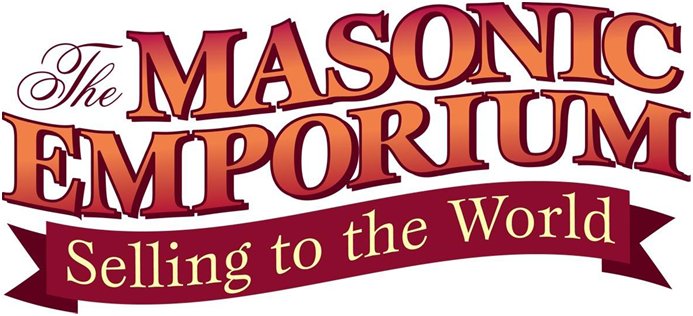
When Queen Victoria came to the throne in 1837 there were about 500 Masonic lodges in the British Empire. By the time she died in 1901, there were nearly 2,000. All these new lodges needed equipment and all the new members needed their ceremonial costumes so these years also saw the development of specialist retailers who adopted modern marketing techniques to reach their audience. 'The Masonic Emporium' exhibition at the Library and Museum of Freemasonry in Freemasons' Hall in London's Covent Garden explores the development of this market, telling the story of its suppliers and customers. It runs from Thursday 1 July to Thursday 23 December 2010 and is free of charge to all visitors.
Freemasons' Hall, Great Queen Street Covent Garden, London WC2B 5AZ Telephone: +44 (0)20 7395 9257 www.freemasonry.london.museum
Kenning was only one example of the manufacturers, publishers and photographers whose business was freemasonry. Amongst the items on display are the furniture and costumes that featured in the trade catalogues of the time as well as souvenir ceramics made by the manufacturer William Henry Goss who extended his range into the Masonic market and some of the trade cards from the many local photographers who captured images of local freemasons. Amongst the customers were lodges in Australia and South Africa, the Grand Lodge itself right down to individual but well known members, such as Winston Churchill. Every lodge and every mason could acquire their full complement of required clothing and equipment from a single supplier. The exhibition also explores how manufacturing for this market changed from a small scale cottage industry to larger scale production and how Masonic manufacturing took full advantage of increasing industrialisation. As Grand Lodge standardised the design of its regalia we find Masonic jewels changing from individual works by craftsmen like Thomas Harper to the commemorative medals for Queen Victoria's Royal Jubilees in 1887 and 1897, made in their thousands by different companies to an identical pattern.
Robes and aprons, jewels and collars, tracing board and working tools, books and lodge stationery, decorative china and
Toye & Co Ltd advertisement
in The Freemason, July 1933
VISITOR INFORMATION
Press enquiries and images: | ||||||||||||
|
Page XIX | |||
(Editor's Note; Corinthian Lodge A.F & A.M. was in this E-magazine recently when they discovered a set of silver Masonic officer's jewels long forgotten by the lodge. A Short History Of Corinthian Lodge - Concord, Mass.
The Revolution ended. The United States of America was created. It was the first modern nation influenced by Freemasonry. Corinthian Lodge, in the heart of the town of Concord, was formed in 1797 under the authority of Grand Master Paul Revere. The first permanent meeting place was in the building across from the Colonial Inn. The inn was a stopping place for the Grand Master when he made the 20-mile trip from Boston to Concord. Farming was the principal occupation then. Today, the setting is far from farming. Freemasonry continues to be vigorous in the community. The Concord Masonic building is now home to Corinthian Lodge, Houghton-Walden Royal Arch Chapter, Adoniram Council Royal and Select Master Masons, Nashoba Valley Court #13 Order of the Amaranth (the Court of the Grand Master's grandmother) and Concord Assembly #53 of the Order of the Rainbow for Girls. The Masons and their families adore the lodge building that is simple, but now brightly restored. The makeover has been amazing. The center of Concord is rich with homes of colonial architecture, many built before the Revolution. Masonic life and community awareness are intertwined here. With the help of two Master Masons, Paul Revere and William Dawes, and the people of Concord, this Massachusetts town is known throughout America as the birthplace of the American Revolution. Corinthian Lodge became the 26th lodge constituted by the Massachusetts Grand Lodge. With the charter in hand, the petitioners met in the grand jury room at the Court House in Concord on July 5, 1797, the day following the annual Independence Day celebration. During the early American period, New England was thought to be an austere place, but any austerity was on the outside. Inside lodges, like Corinthian Lodge, meetings were held in the warmth and comfort of a tavern's hospitality. In its first 22 years, the lodge met in six different halls. The first lodge meeting was held in Joshua Jones' Hall (tavern) on Exchange Street. The last three of these early years were at the County House, where warmth and hospitality continued. On November 13, 1820, Corinthian Lodge and the Town of Concord dedicated their new brick building that was to be used as a school and the first permanent Masonic Hall. It is said that the young Henry David Thoreau was a teacher here for a short time. From 1797 to 1916, Corinthian Lodge operated as a "moon lodge." Its meeting dates were tied to the arrival of a full moon, which helped the brothers traveling on foot and horseback without benefit of electricity. The first Master was Dr. Isaac Hurd , who later served as Senior Grand Warden and was the son of Benjamin Hurd, for whom the Distinguished Service Medal of Royal Arch Masonry is named. Many notable Masters took office in the ensuing years. Among them were Dr. Lemuel Shattuck for whom the Boston hospital is named; Louis A Surette, a historian and author of many Masonic histories; and Ephraim W. Bull, who developed the Concord grape. During the 50th anniversary of the battle at the bridge over the Concord River where the farmers stood and fired the shot heard around the world, the Masons of Corinthian Lodge were prominent in the laying of the monument cornerstone on April 19, 1825. The brothers never rested. The most recent 25-year period of Corinthian Lodge's history is full of enhancements, and a restoration of the building, inside and out. It has become a proud showplace for the Masons. The Current Building's History
The Masonic building was set off Monument Square, in the center of town, about ten feet from the curb. In 1882, the lodge changed the building's location on their lot, moving it back 42 feet to where it stands today. Following World War I, membership outgrew available accommodations, and in 1920 the present lodge room and banquet hall were added to give the building its present footprint. An old photo in the lodge room shows that the front of the building has changed very little from its original design by town officials. The architectural style is Federal, so named because it flourished during the first years of American federal government, from around 1790 to 1815. Its understated design is of great refinement, with simple flat shapes, but delicate detail. At the top, near the peak of the gable end, are three little openings built for pigeons that were used for communication or other more gastric uses. With the arrival of the telephone in the 20th Century, pigeons have left, but the openings remain and seem an intimate part of the facade. In Masonic tradition, the Worshipful Master is figuratively in the East when Corinthian Lodge is open. A beautiful lighted mural in a recessed wall behind the Master's chair depicts a Grecian landscape with a facade of Corinthian pillars and pilasters on his left and right. The setting is the Mediterranean coast, a green valley and village, as bright as it is simple. The impressive lighted ceiling is reminiscent of the biblical readings of Genesis 1:14-15: "And God said, 'Let there be lights in the expanse of the sky to separate the day from the night, and let them serve as signs to mark seasons and days and years, and let them be lights in the expanse of the sky to give light on the Earth.'"
The impression one receives while in the lodge room relates the Masonic world we live in today to that of the ancient Greeks, who created the Corinthian columns about 2,000 years ago, and who loved the philosophy of brotherhood. Now, we enjoy the same kind of associations with one another. In Corinthian Lodge, you can sense our history old and new, and will always be warmly welcomed as a friend or brother. |
|
Page XX |
…Over Kufour's Knighthood From The GhanaWeb.com
A scandal is erupting within the Roman Catholic Church over the recent conferment of the prestigious Knight Commanderhood Order of Pope Pius IX on ex-President John Agyekum Kufuor by Pope Benedict XVI.
A damning article in circulation within the Roman Catholic Church reveals the ex-president's senior membership status of a powerful secret society in the UK, called the United Grand Lodge of Ancient, Free and Accepted Masons of England, which he served as a Senior Grand Deacon (SGD) and a Grand Sword Bearer (PGSwdB). The Freemasons are bitterly abhorred by the Vatican, and all Roman Catholic worshipers have been prohibited by the Pope himself from joining. Anybody who disobeys this order automatically ceases to be a member of the church. The article also questioned the selection of Mr. Kufuor for the conferment in the face of his alleged adulterous affairs with Gizzle Yadzi, endemic corruption, murders, narcotic drugs afloat the shores of Ghana during his tenure as president and his membership of a secret society, the Freemasons. A member of the church, Dominic Sagoe, Ghanaian resident in Norway, wrote the article and insists that Mr. Kufuor is undeserving of the knighthood because he is not a Roman Catholic, but rather an Anglican who became a catholic under bizarre circumstance. It also accused the Ghana Catholic Bishops Conference of hypocrisy and the Catholic Standard Newspaper of dishonesty. While the article reveals that Ghana Catholic Bishops for whatever reason, failed to do due diligence on Mr. Kufuor before presenting his name to Pope Benedict XVI, for the title to be conferred on him, it also exposes a situation where Mr. Kufuor committed sacrilege by dishonestly receiving the award knowing he is not supposed to by virtue of his membership of a Lodge. The revelation also puts his wife, Mrs. Theresa Kufuor, in collision course with both the Vatican and the Ghana Catholic Bishops for not drawing their attention to her husband's membership of a secret society which the church has banned its members from joining. The Catholic Church has been a persistent critic of Freemasonry. Since the early 18th century, the Vatican has issued several papal bulls banning membership of Catholics from Freemasonry under threat of excommunication. Currently, as reiterated in 1983, Catholics who become Masons are in a state of Grave sin and may not receive Holy Communion, but the penalty of excommunication is not formally declared. The Church argues that Freemasonry's philosophy is antithetical to Christian doctrine and that it is at many times and places anti-clerical in intent. The 1913 edition of the Catholic Encyclopedia argued that some of the ceremonial in the Scottish Rite is anti-Catholic. The Masonic use of Biblical imagery is also seen by the Catholic Church being done in a way that suggests antichrist. It is unclear whether Cardinal Peter Appiah Turkson who now serves the Pope, is aware of this sacrilege by the church in Ghana. Below is the full text of Brother Sagoe's article currently in circulation and copy of which has been forwarded to The Herald by a church Hi, to you all. I read the article below on ghanaweb.com and I want to find out whether it is really true. On the morning of 25th October, 2010, I woke up from my bed in Trondheim, Norway, and as usual, tried to update myself on the happenings in Nkrumah land. One of the many headlines on your popular Ghanaian website read “Catholic Church Honours Kufuor, Wife”. This headline at once captured my attention. Reading the story, I learnt of the conferment of the prestigious Knight Commanderhood of the Order of Pope Pius IX on former President John Agyekum. This story captured my attention for various reasons which I intend discussing herein. After reading the story, I could not help but exclaim, “What is happening to Sir James Marshall`s Catholic Church”. In this article, I intend commenting, passionately, on some recent happenings in my beloved Catholic Church in Nkrumah land. I will also, dispassionately, show that former President Kufuor not only does not qualify for such an award, but is undeserving of such an honour. When I was pursuing my Master of Philosophy degree in Social Psychology at the Department of Psychology, University of Ghana, in 2008, I took a course in Media Psychology taught by Dr. Adjepong Afrifa, a prominent Social Psychologist. One of the topics we discussed at length was “The Media and Public Opinion” wherein we discussed the intercourse between media reportage and public opinion. At that lecture, Dr. Afrifa extensively recounted how The Catholic Standard Newspaper led the attack on the erstwhile PNDC/NDC government of former President Dr. J. J. Rawlings. He spoke at length on how vociferous the Catholic Standard Newspaper was attacking the perceived injustices of the Rawlings regime and how even non-Catholics lined up en mass after mass on Sundays to patronize the newspaper to read the latest bash of the Rawling's regime that the other “emasculated” media could not dare utter a word about. He also topped it up with the bashing in the encyclicals of the Ghana Catholic Bishops Conference on such perceived injustices. During the lecture, my pride as a staunch Catholic and then junior Marshallan was boosted. However, I felt this pride attacked when finally he queried rhetorically “What is happening today?” I asked myself this question when I read the story on the Papal award to former President John Agyekum. Many other questions have pricked my conscience. Did the Catholic Standard and the Ghana Catholic Bishops Conference not witness many of the injustices that characterized the tenure of former President Kufuor? What about Gizelle Yajzi cum the Dr. Anane Affair, the gruesome murder of Ya-Na Yakubu Andani and 42 others, Issah Mobila, Hotel De Waa Waa, the wanton corruption under former President Kufuor`s watch, Hon. Amoateng and the escalation of the cocaine trade under former President Kufuor`s watch, the Bokassa-like self-glorification, the Vodafone deal et al. What was said about these? Did they not deserve comments by the Church? The only time, I recall, the Catholic Standard and the Ghana Catholic Bishops Conference were outspoken against the Kufuor-led NPP administration was when Religious and Moral Education was decadently scrapped from the Junior High School syllabus and massive criticism from the Ghana Catholic Bishops Conference, led by Archbishop Sarpong on “Catholic Digest” and other media led to its reintroduction by the man who scrapped it. What about the newly-discovered corruption and looting of the Ghanaian people`s property by former President Kufuor and his gang of “lootocrats”. Do they not deserve commentary by the Catholic Standard and the Ghana Catholic Bishops Conference? On top of all this preferential treatment, President Kufuor was nominated by a Ghanaian Catholic Archbishop and has been conferred such a prestigious papal award. In the next facet, I will show that president Kufuor did not qualify to be nominated to receive such an honour. First of all, it is important to state that, former President Kufuor although gave in to his wife and abandoned his Anglican roots and intermittently attends mass at Christ the King Catholic Church, Accra, has never been and is not Catholic. If an Anglican or Presbyterian attends mass all year or for ten years, does he or she automatically become Catholic? No! But that is only a small portion of my argument. Assuming, without admitting, that former president Kufuor has received the three sacraments of Christian initiation – baptism, confirmation and the holy Eucharist-that makes a person a true Catholic, he still does not qualify as a Catholic because he has for decades been and continues to be a freemason. He has not shed off his Masonic ties and let anybody challenge me on this issue. Here is palpable evidence. Former President Kufuor is a Royal Arch Mason. In 2005, former president Kufuor was promoted to Past Senior Grand Deacon and later Past Grand Sword Bearer. He even attended the Grand Lodge Annual Investiture at Freemasons' Hall, Great Queen Street, London on Wednesday, the 29th day of April, 2009.
|
|
Page XXI | |||
At this juncture, it's important to take a look at the Catholic Church`s stance on freemasonry. The Catholic Church's most recent statement on Freemasonry was released in the 1983 document, Quaesitum Est, written by the Congregation for the Doctrine of the Faith and approved by Pope John Paul II. This document remains the most current standing reference on the Church's policy on freemasonry. Quaesitum Est states that "The (Catholic) faithful who enroll in Masonic associations are in a state of grave sin and may not receive Holy Communion…." Further, if a "Catholic Mason" adamantly and persistently refuses to submit to the pope's authority in precluding his membership in the Lodge, he finds himself in a state of "automatic excommunication". The Catholic Church's negative judgment in regard to Masonic association remains unchanged since Masonic principles have always been considered irreconcilable with the doctrine of the Church and therefore membership in them remains forbidden to Catholics. Thus, former President Kufuor is in a state of "automatic excommunication" and is therefore not a Catholic. How could he have been nominated for such a papal award? In fact, in the 25 years of my life on earth, I have never come across a non-Catholic who has received a papal award. Someone prove me wrong. This faulty nomination (and not faulty award) of former president Kufuor brings into question what the leadership of my Catholic lodge, the Noble Order of the Knights and Ladies of Marshall, did in Kumasi in 2003 at the sixth Marshall Re-Union conference by awarding former president Kufuor a Noble Order of the Knights of Marshall – Honoris Causa making him a member of the Noble Order. Were they oblivious of the fact that he was a freemason? At present, former President Kufuor is both a Marshallan and freemason. What hypocrisy! What sacrilege! I do not fault the leadership of the Noble Order. President Kufuor should have disclosed his Masonic status to them. But given his fixation for awards, how could he reject such a juicy award. I bet anytime before he enters any Masonic chamber, he wears our beloved Marshallan regalia, puts on the Masonic regalia and apron to cover the Marshallan regalia and wears that 50 cent gold chain he awarded himself on top of it. I cannot help but laugh! I however wish to state that as a Marshallan and staunch Catholic, I am unrelenting in my belief in papal infallibility. In this light, although whoever nominated former President Kufuor is at fault, Pope Benedict XVI is not at fault in awarding former President Kufuor this honour. Long Live the One Holy Roman Catholic Church!
By Bro. Dominic Sagoe, B.A M.Phil (Ghana), M.Phil Cand. (NTNU) | |||
Courtesy of Brother Barry E. Govey
Dear Brethren All I feel sure you will be pleased to know that Freemasonry continues to be practised worldwide, regardless of circumstances and adversity. The following forwarded e-mail and photographs attest to the same. You may wish to pass this on to other Freemasons for their information. With kindest regards. Yours sincerely and fraternally Barry
Barry E Govey
Thought you may like to see the attached, Freemasonry in action?
FRATERNALLY Brethren, Canada Lodge held our first Ceremonies of Initiation on the evening of October 7, 2010 here at Kandahar Air Field. Initiated were Major Robert Kelly and Corporal Satraj Toor.
Due to operational requirements we did not (all who had parts) have the chance (though try we did) to do a complete run through before the big night. If I may say so myself, the ceremony was done as well as any I have seen back home (in my limited Masonic experience, mind you). All of the parts came together seamlessly and it was quite evident that all of the brethren had put their heart and soul into the perfection of their work.
Our evening ended with a truly Afghan flavour as we were posing for photographs we came under rocket attack and had to hit the floor (pictured). There is also a good group photo that was taken, however the one on my camera did not turn out. I will forward it to you when I get a copy.
S&F,
W. Bro. Gordon Hendrie FCF |
|
Page XXII | ||
Beever gives his drawings an anamorphosis view, his images are drawn in such a way which gives them three dimensionality when viewing from the correct angle. It's amazing !!!
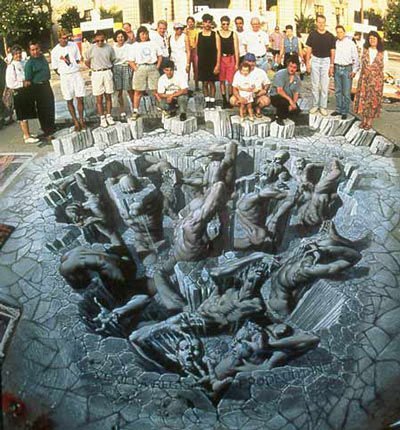 Drawn On A Flat Sidewalk With Colored Chalk.
We Don't Like All Them Modern Masonic Ways
"If the old ways were good enough for grandpa they are good enough for me."
How many times have we heard our older Brother Masons say that, or "That ain't the way we done it in my year.
They should also remember that grandpa or great grandpa either walked or rode to Lodge meetings on a horse or in a wagon behind one on nights that had a full moon so they could see the way.
And, he cooled himself during the summer meetings with a cardboard advertising fan from the local funeral home. Keeping warm in the winter was a balance between sitting to close to the wood or coal stove and sweating or sitting behind those who did and having a cold back.
And, he walked carefully to avoid the spittoons on the Lodge room floor or wiped his eyes when the tobacco smoke got to thick.
A Redneck Weding Cake
Food For Thought
#1. Why do we press harder on a remote control when we know the batteries are getting weak?
#2. Why do banks charge a fee on "insufficient funds" when they know there is no money in the account?
#3. Why does someone believe you when you say there are four billion stars, but check when you say the paint is wet?
#4. Why doesn't glue stick to the bottle?
#5. Why do they use sterilized needles for death by lethal injection?
#6. Why doesn't Tarzan have a beard?
#7. Why does Superman stop bullets with his chest, but ducks when you throw a revolver at him?
#8. Why did Kamikaze pilots wear helmets?
#9. Whose idea was it to put an "S" in the word "lisp"?
#10. If people evolved from apes, why are there still apes?
#11. Why is it that no matter what color bubble bath you use the bubbles are always white?
#12. Is there ever a day that mattresses are not on sale?
#13. Why do people constantly return to the refrigerator with hopes that something new to eat will have materialized?
#14. Why do people keep running over a string a dozen times with their vacuum cleaner, then reach down, pick it up, examine it, then put it down to give the vacuum one more chance?
#15. Why is it that no plastic bag will open from the end you first try?
#16. How do those dead bugs get into those enclosed light fixtures?
#17. When we are in the supermarket and someone rams our ankle with a shopping cart then apologizes for doing so, why do we say, "It's all right?" Well, it isn't all right so why don't we say, "That hurt, you stupid idiot?"
#18. Why is it that whenever you attempt to catch something that's falling off the table you always manage to knock something else over?
#19. In winter why do we try to keep the house as warm as it was in summer when we complained about the heat?
|
|
All material in this site may be used to educate everyone, Freemasons and non-Freemasons alike about Freemasonry and for the promotion of Freemasonry. A very sincere effort is made to avoid using any copyrighted material, without permission or giving credit to the author and source, in the creation of this web site. If you discover something that is yours, without giving you due credit, please let me know and due credit will be given or the item will be replaced.
|
|
|

